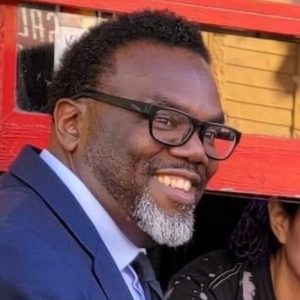Editor’s Note: The following article, which was co-authored by two Columbia College journalism students, ran in the Jan. 26 issue of the Chicago Tribune.
By Lauren Rozyla, Morgan McDevitt and Sam Roe, Chicago Tribune
On a summer night in 2004, two Chicago police officers chased an alleged gunman up to the front door of a West Side two-flat.
There, according to the officers, the suspect tried to get inside the building by ramming his shoulder against the door while simultaneously turning and pointing a pistol at them.
One of the officers took cover behind a tree, then stepped out and opened fire. Moments later, police learned they had seriously injured the man as well as a 13-year-old girl hiding in the building’s vestibule with several other bystanders.
Although police did not find a gun on the man or near the two-flat, law enforcement officials cleared the two officers of wrongdoing just 10 hours after the shooting.
Based largely on the officers’ statements, the suspect, Seneca Smith, was arrested and eventually convicted of attempted murder of a police officer. Smith, now 30, faces up to 80 years in prison.
But an investigation by the Tribune in conjunction with journalism students from Columbia College Chicago casts doubts on the officers’ version of events.
For example, one officer who chased Smith testified that he clearly saw Smith point a gun at his partner from the front door of the two-flat, in the 5300 block of West Congress Parkway. The officer testified which hand held the gun and how Smith was positioned.
But a visit to the crime scene shows it would have been impossible for the officer to see Smith from where he explicitly and repeatedly testified he was standing. The side of the two-flat would have blocked his view.
Court and police records reveal other examples of evidence contradicting police statements. Despite officers’ testimony about being shot at, police didn’t find a gun on Smith after he was shot. And the bystanders in the vestibule — seven teenage girls and young women — later said they never saw Smith with a gun.
They also contended in a lawsuit that police held them against their will and pressured them to say Smith had a gun. “They treated us like criminals,” said Carrie Warfield, now 26.
When the Tribune and Columbia students presented their findings to the Independent Police Review Authority, a city agency that investigates police shootings, it said it would take the rare step of re-examining the case. Six months later — and only after reporters asked for an update — an investigator went to the crime scene earlier this month. A spokesman said no new evidence was found and the matter was closed. The agency would not comment further.
The agency, formerly called the Office of Professional Standards, has come under fire in the past. A Tribune series in 2007 reported how the agency sometimes conducted only cursory investigations. That same year, after a series of scandals, Mayor Richard Daley revamped the agency, promising that the group would be more transparent.
But when the Tribune and the students recently filed a public records request for the number of police shootings the agency had ruled unjustified in the past several years, the group denied the request, saying it did not keep such statistics.
Agency head Ilana Rosenzweig said she could not estimate the percentage of shootings deemed unjustified. She said other data and details on shootings are posted on its Web site.
Craig Futterman, a University of Chicago law professor who studies police misconduct, said it is difficult to believe the agency doesn’t maintain basic statistics on police shootings.
“What is the city trying to hide?” he said. “I can’t think of a single instance in recent history in which the (Police Department) or IPRA ever found a police shooting of a civilian unjustified. Perhaps that is what they don’t want the Tribune or public to know.”
The confrontation
The two police officers who shot at Smith — Dwayne Collier and Calvin Chatman — were in the neighborhood conducting plainclothes surveillance in an unmarked van because of a gang shooting earlier in the day.
Smith, they testified, approached the van on the passenger side and asked them what they were doing there.
“Relax, man,” said Chatman, the driver. “We’re the police.” He then showed his badge.
Smith, an alleged gang member with a record of drug arrests, glanced down the street at a marked police car handling the earlier shooting, according to police. Then he is alleged to have sworn at the officers, pulled a gun from underneath his jersey and placed it against Collier’s head. Chatman said he immediately reached across his partner’s chest and fired two shots at Smith.
Smith disputes this account, saying that when he approached the van he took his empty hand from his pants pocket, and the officer shot at him. Chatman and Collier did not respond to requests for comments.
After Chatman fired, Smith crumpled to the ground, then sprang up and ran.
The officers jumped from the van and chased Smith down the street. While running, Smith is alleged to have turned and fired a shot at the officers. Collier returned fire, but Smith kept running.
Meanwhile, seven girls and young women were returning from a corner store. When they heard the shooting and saw Smith and the two undercover officers running toward them, they screamed and ran into a two-flat on the block, according to their statements to police.
But the door inside the vestibule leading to one girl’s basement apartment was locked. As they banged on the door, Smith ran up and pushed on the front door of the two-flat, which would not open, perhaps because the 4-by-7-foot vestibule was so crowded.
Chatman and Collier would later say they never saw the girls. They said they watched as Smith repeatedly rammed his right shoulder into the front door while turning and pointing the pistol with his right hand at Collier.
Collier, a former award-winning Army sharpshooter, fired twice at Smith. The door of the vestibule flew open, and police said Smith fell inside. Chatman heard female voices inside the building screaming, with one crying, “Don’t hurt me!”
A few seconds later, Collier cautiously approached the vestibule and peered down the steps leading to the basement apartment. He saw Smith lying at the bottom of the stairs and saw and heard the girls screaming.
Instead of handcuffing Smith, securing his gun and radioing for help, both officers, according to their statements to supervisors, left the scene. Collier ran down the street to seek backup, while Chatman sprinted back to the unmarked van and drove toward the rear of the two-flat. He later told supervisors he did so in case Smith tried escaping from a back door.
Moments later, responding officers entered the front door and saw Smith at the bottom of the stairs, bleeding from bullet wounds in the chest, arm and leg. Inside the basement apartment were the seven young girls and women, including Chantel Davidson, 13, who was hit in the shoulder by a police bullet.
When police did not find a gun on Smith, they searched the apartment. Warfield, who lived there, later testified that police cut open couches, tipped over the refrigerator and broke two TVs. Still, they found no gun.
For the next several hours, officers scoured the street. At one point, more than 100 officers were on the block. A firetruck with powerful lights was brought out to illuminate the area, and a gun-sniffing police dog was summoned. But no weapon was found.
The girls and young women later said in court filings that they were locked in interrogation rooms at the police station overnight, deprived of using the bathroom and threatened with arrest. One was so upset she called a TV station for help. The girls continued to say Smith did not have a gun.
Finally, at 6:30 the next morning, police said they found an unregistered gun under a bush 40 yards down the street from the two-flat. Police officials immediately gathered to hold a “round table” meeting to determine if the shooting was justified.
The panel, consisting of police and other law enforcement officials, heard several officers give statements. But only one girl was brought in to testify: a 15-year-old who, according to police, said she had seen Smith show her cousin a gun the afternoon of the shooting.
After about an hour, the round table provided the Police Department’s initial finding in the case, clearing the two officers of wrongdoing — without interviewing all the witnesses, examining fingerprints or analyzing ballistics evidence.
Inconsistencies
Not until the girls filed a lawsuit was the Police Department compelled to answer pointed questions about the shooting and produce crucial documents. Those records, along with depositions and trial transcripts, reveal that the police’s initial version of events does not square with what officers later testified to in court.
For instance, when the round table cleared the officers, police Assistant Deputy Superintendent Patrick McNulty addressed the initial failure to find a gun by writing that Officers Chatman and Collier briefly left the scene and the building unguarded.
But when questioned a year later in the girls’ civil suit, Collier said he moved only “a few feet” after he shot at Smith and kept his eye on the front door. Chatman said he did not go to the back of the two-flat until a responding officer arrived at the front.
And neither officer reported seeing anyone entering or leaving the building. As for the gun found 40 yards away, Smith’s fingerprints were not on it, court records show.
Chatman repeatedly testified in his deposition that he took cover behind a parked car in front of an elementary school, two buildings down from the two-flat and 75 feet from Smith. Chatman told in detail how he observed Smith for several seconds ramming his shoulder into the front door while turning and pointing his gun at his partner.
When pressed by plaintiffs’ attorney Russell Ainsworth of Loevy & Loevy about why he did not shoot at Smith, Chatman said he didn’t have a good angle.
“Was something obstructing your view?” the attorney asked.
No, Chatman said. He just didn’t feel comfortable enough to take an accurate shot.
But a visit to the crime scene shows the front door of the two-flat is not visible from Chatman’s alleged position because the building’s shape blocks the view.
This inconsistency and others were not explored when Smith was criminally tried in 2007, a transcript of the trial shows. A jury convicted him of attempted first-degree murder of a police officer.
Smith’s trial attorney, Steven Wagner, declined to comment.
This summer, a federal jury awarded a total of $241,000 to the female bystanders who said police held them against their will.
In the fall, Ainsworth also represented Chantel Davidson, the girl shot in the shoulder, in a civil lawsuit against the city. At trial, he brought to court poster-sized photographs of the front of the two-flat as well as Chatman’s obstructed angle.
“Please explain to the jury how you were able to see through the brick wall,” the attorney asked Chatman.
Contradicting his previous statements under oath, Chatman testified he was actually in front of the building, and his view was not obstructed.
The jury came back deadlocked. The case was retried, and this time the jury ruled for the officers.
Testifying in Smith’s criminal trial, Collier and Chatman said that, minutes after the shooting, they embraced in front of the two-flat.
“Just thanking God we were safe,” Collier explained. “Nobody was hurt.”
Sam Roe is a Tribune reporter who teaches investigative reporting at Columbia College Chicago. Lauren Rozyla and Morgan McDevitt were Columbia students who worked on this report as an independent study project under Roe.
sroe@tribune.com

![Reblog this post [with Zemanta]](http://img.zemanta.com/reblog_c.png?x-id=6328b01a-9813-491d-9d9e-91c0b03461ea)





Be First to Comment